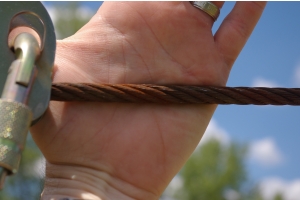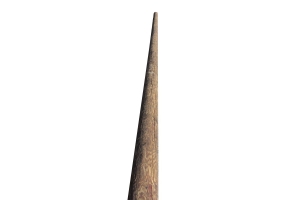Blog
-
November 06, 2021
Cargo nets are a versatile and useful tool that can be used for a variety of purposes. They are ideal for storing and transporting heavy objects, and they can also be used to create temporary barriers or enclosures. Cargo nets are also a popular choice for playgrounds, ropes courses, obstacle courses, ninja courses, and other recreational structures.
Cargo nets are made by weaving together a series of ropes or cords. The ropes or cords are typically made of polydacron, nylon, polyester, hemp or manilla, and they are woven together or knotted in a variety of patterns, depending on the desired shape, strength and flexibility of the net needed for your application.
The size of a cargo net is determined by the length and width. The length and width of the net are measured from one end to the other. Cargo nets can take many shapes like square, rectangle, triangular, octagonal, and circular to name a few common shapes.
The strength of a cargo net is determined
-
February 22, 2021
What is a ropes course?
A ropes course is an outdoor activity course that uses ropes and other equipment to challenge participants physically and mentally. Ropes courses can be found at adventure parks, outdoor education centers, and other recreation facilities. They are typically designed for groups of people, but some courses can be completed individually.
What are the benefits of doing a ropes course?
There are many benefits to doing a ropes course, including:
- Improved physical fitness
- Increased self-confidence
- Enhanced teamwork skills
- Reduced stress levels
- Increased sense of accomplishment
- Fun and excitement!
Who can do a ropes course?Ropes courses are open to people of all ages and abilities. However, some courses may have height or weight restrictions. It is always best to check with the course operator before participating.
-
February 16, 2021
Challenge courses and aerial adventure parks are a popular form of outdoor recreation that offer participants a challenging and exciting experience. However, the cost of starting and operating a challenge course or aerial adventure park can be high. There are a number of financing options available to help entrepreneurs start and grow their businesses in this industry.
One option is to obtain a loan from a bank or other financial institution. Loans can be used to finance the purchase of land, equipment, and other startup costs. The terms of a loan will vary depending on the lender, the amount of the loan, and the borrower's creditworthiness. Experiential Systems offers financing for challenge courses, aerial adventure parks, zip lines and asociatied equipment - check out the site for more infomration. -
August 02, 2020
Wire rope is a mainstay and central component of modern ropes course, challenge course and zip line installations. In teh ropes course and zipline industry we typically utalize flexible wire rope like 1/4" to 3/8" GAC (Galvanized Aircraft Cable)or IWRC (Independant wire rope core) in sizes up to 1". It's important for designers, installers, inspectors and operators to understand some basics on wire rope design and inspection.
Wire rope construction
Wire rope is made up of a number of individual wires that are twisted together. The wires can be made of a variety of materials, including steel, stainless steel, and aluminum. The type of material used will depend on the application. For example, steel wire rope is strong and durable, but it is also heavy. Stainless steel wire rope is corrosion resistant, but it is also more expensive than steel wire rope. Aluminum wire rope is lightweight, but it is not as strong as steel or stainless steel wire
-
May 06, 2020
Rope courses and ziplines are a great way to have fun and get exercise, but they can also be dangerous if the trees they are built in are not healthy. That's why it's important to have a certified arborist conduct a level 2 inspection to assess the tree health before installing a ropes course or zipline.
A level 2 inspection is a more thorough inspection than a level 1 inspection. A level 2 inspection will include:
- A visual inspection of the tree's overall health and condition.
- An inspection of the tree's roots, trunk, and branches.
- An inspection of the tree's surrounding area for potential hazards.
- An inspection of where elements and componenets of the challenge course or ropes course connect with the tree
If the certified arborist finds any problems with the tree, they will recommend repairs or removal. It is important to follow the arborist's recommendations to ensure the safety of your ropes course or zipline.








